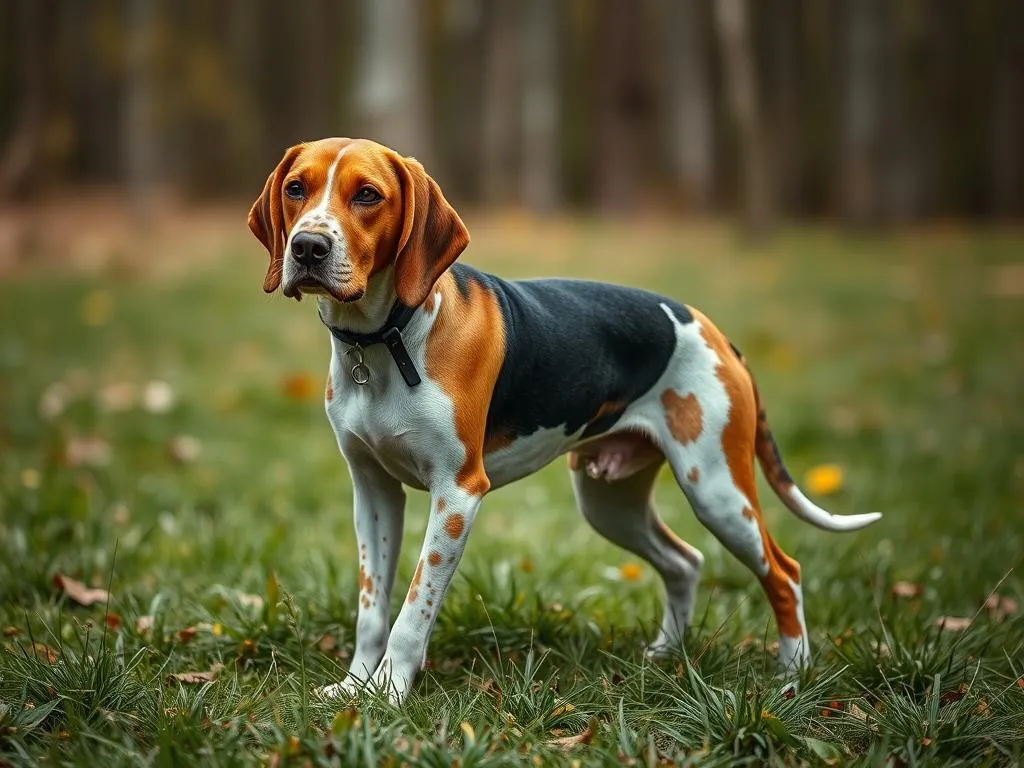
Introduction
Dogs have been our companions for thousands of years, serving various roles from hunters and herders to beloved family pets. The diversity among dog breeds reflects their unique histories, purposes, and traits, making each breed special in its own right. Among these breeds, the English Foxhound stands out, known for its remarkable hunting abilities and friendly disposition. This article aims to provide a comprehensive understanding of the English Foxhound, exploring its history, characteristics, care requirements, and much more.
History of the English Foxhound
Origins
The English Foxhound has deep historical roots in England, tracing back to the 16th century. Initially bred for hunting foxes, the breed was developed to assist hunters in tracking and chasing prey across various terrains. The influence of the English aristocracy played a significant role in shaping the breed, as fox hunting became a popular sport among the gentry. The hounds were meticulously bred for stamina, speed, and scenting ability, creating a line of dogs well-suited for the rigors of hunting.
Development
Over the centuries, the English Foxhound has evolved, with various strains emerging based on regional hunting practices. Key figures, such as Sir Edward W. Smith and the Duke of Beaufort, contributed significantly to the breed’s refinement. The introduction of various other hound breeds, including the Harrier and the Bloodhound, also influenced the English Foxhound‘s development, further enhancing its hunting prowess. As hunting practices changed, the breed adapted, but its essential characteristics remained intact.
Recognition
The English Foxhound gained formal recognition by kennel clubs in the late 19th and early 20th centuries. The American Kennel Club (AKC) recognized the breed in 1909, and it has since maintained a presence in dog shows and competitions. Today, the English Foxhound is celebrated for its athleticism and grace, often seen competing in various events that highlight its skills and temperament.
Physical Characteristics
Size and Weight
The English Foxhound is a medium to large breed, with males typically standing between 21 to 24 inches tall at the shoulder and weighing around 65 to 75 pounds. Females are slightly smaller, ranging from 20 to 23 inches in height and weighing 50 to 65 pounds. Their size and build contribute to their agility and endurance, essential traits for hunting.
Coat and Color
The breed’s coat is short, dense, and weather-resistant, providing protection during hunts. Common color patterns include tri-color (black, white, and tan), lemon (light tan and white), and red and white. The coat requires minimal grooming, making it relatively low-maintenance compared to other breeds.
Distinctive Features
One of the English Foxhound‘s most notable features is its long, drooping ears that frame its expressive face. Its large, dark eyes convey a friendly and intelligent demeanor. The breed’s strong, muscular body is built for stamina, with a straight back and powerful legs that enable it to run for extended periods without tiring.
Temperament and Behavior
Personality Traits
The English Foxhound is known for its friendly, sociable nature. These dogs are typically loyal, affectionate, and eager to please, making them excellent companions. Their playful demeanor and gentle disposition make them well-suited for families, although their hunting instincts can sometimes lead to strong prey drives.
Socialization Needs
Socialization is crucial for the English Foxhound to thrive. Early exposure to various environments, people, and other animals is vital in developing a well-rounded temperament. This breed tends to be friendly with both humans and other dogs, but proper socialization helps prevent any potential behavioral issues and enhances their adaptability.
Activity Level
The English Foxhound is an energetic breed that requires significant exercise to stay healthy and happy. Daily walks, playtime, and opportunities to run off-leash in safe, enclosed spaces are essential. This breed thrives in active households where they can participate in outdoor activities, making them ideal companions for those who enjoy hiking, running, or engaging in sports.
Care Requirements
Nutrition
A balanced diet is crucial for the health and well-being of an English Foxhound. High-quality dog food that meets their specific nutritional needs is recommended. The feeding schedule should include two meals per day, with portion sizes adjusted based on age, weight, and activity level. It’s essential to monitor their weight, as this breed can be prone to obesity if overfed.
Grooming
Grooming an English Foxhound is relatively straightforward due to their short coat. Regular brushing, at least once a week, helps remove loose hair and keeps the coat healthy. Bathing should be done only as needed, as frequent baths can strip the coat of its natural oils. Regularly checking their ears and trimming their nails will also contribute to their overall hygiene.
Health Considerations
Like all breeds, the English Foxhound is prone to certain health issues. Common concerns include hip dysplasia, ear infections, and certain genetic conditions. Regular veterinary check-ups are essential to catch any potential health problems early and to keep vaccinations up to date. Maintaining a healthy diet and adequate exercise also plays a critical role in preventing health issues.
Training and Obedience
Training Techniques
Training an English Foxhound can be rewarding but requires patience and consistency. Positive reinforcement methods, such as treats and praise, work best for this breed. Engaging training sessions that incorporate play will keep them motivated. Basic commands and obedience training should begin early to establish good behavior patterns.
Challenges in Training
While English Foxhounds are intelligent, they can also be independent thinkers, sometimes leading to stubbornness. They may not always respond immediately to commands, especially if distracted by interesting scents or sights. Establishing a strong bond and using engaging training techniques can help overcome these challenges.
Importance of Early Training
Early training and socialization are vital for the English Foxhound. Starting training in puppyhood helps instill good habits and behaviors, reducing the likelihood of developing behavioral issues later in life. Socialization with other dogs and people is also crucial in ensuring that they grow into well-adjusted adults.
Living with an English Foxhound
Ideal Living Conditions
The English Foxhound thrives in environments that offer plenty of space to run and play. While they can adapt to apartment living, they do best in homes with access to a yard or nearby parks. A securely fenced yard is important to keep them safe, as their strong prey drive may lead them to chase after small animals.
Compatibility with Families
This breed is known for its compatibility with families, including those with children and other pets. Their friendly demeanor makes them excellent companions for kids, and they generally get along well with other dogs. However, supervision is recommended during playtime, especially with smaller pets, to prevent any accidental roughhousing.
Lifespan and Aging
The average lifespan of an English Foxhound is around 10 to 13 years. As they age, their exercise needs may decrease, and they may require a diet tailored to senior dogs. Regular veterinary check-ups become increasingly important to monitor for any age-related health issues and to ensure they remain comfortable and healthy in their golden years.
English Foxhound in Popular Culture
Representation in Media
The English Foxhound has made its mark in popular culture, appearing in various films, literature, and art. Often depicted as loyal companions or skilled hunters, these dogs embody the spirit of adventure and friendship. Their striking appearance and charming personality have captured the hearts of many dog lovers.
Famous English Foxhounds
Throughout history, English Foxhounds have been associated with notable figures and events. They have been part of the hunting scenes involving British royalty and aristocrats, symbolizing status and sophistication. Their presence in fox hunting history has solidified their legacy as one of the quintessential hunting breeds.
Conclusion
In summary, the English Foxhound is a breed that embodies loyalty, athleticism, and sociability. With a rich history as a hunting companion and a friendly disposition, this breed makes an excellent choice for active families and individuals. Understanding the unique needs and characteristics of the English Foxhound is crucial for potential owners, ensuring that they provide a loving and fulfilling environment for these remarkable dogs. Whether as a hunting partner or a family pet, the English Foxhound continues to be a beloved breed, valued for its companionship and spirited nature.









